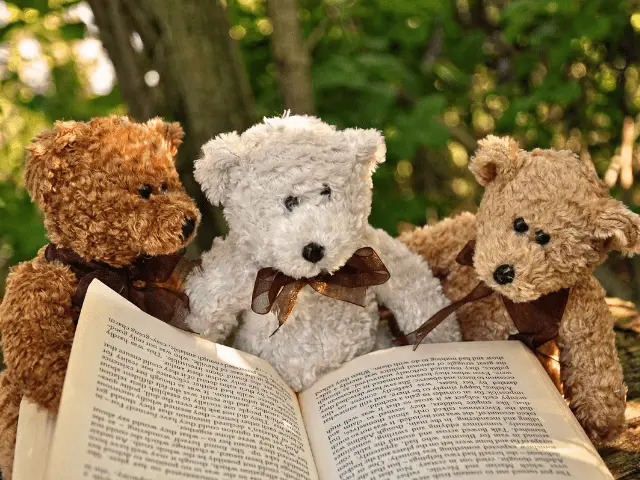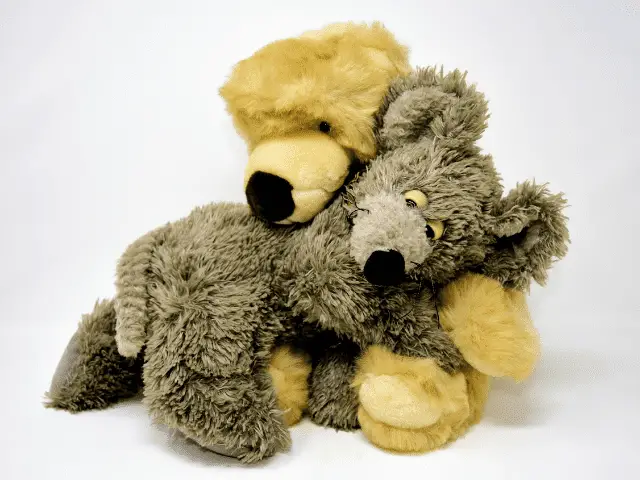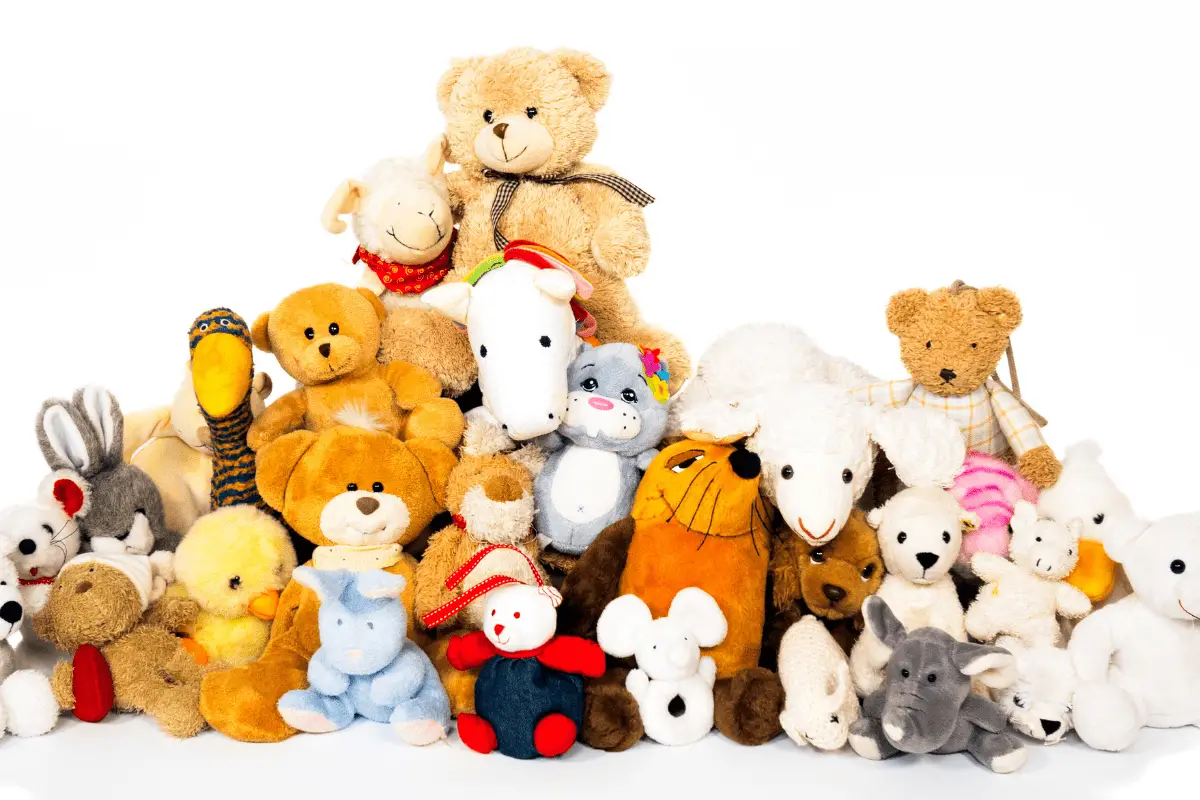A house with kids is a house filled with stuffed toys. And why wouldn’t it be? Stuffed animals are huggable and adorable. They might even be your child’s favorite toys.
This makes stuffed animals a priority when you’re packing for moving. If your children are old enough, the packing of the stuffed toys can be easily delegated to them. If they’re still young, though, it could be overwhelming.
For a parent, moving to a new place is an opportunity to declutter and get rid of unneeded items. But for the kids, packing stuffed animals and probably seeing some long-lost favorites might cause the children some emotional conflict.
You need to prepare them for this emotional rollercoaster. Step in and help your child through the process. Involving your child in the packing process will help take their mind off the stress of moving.
The packing itself is an easy job. Here’s how you go about it:
Table of Contents
Packing Stuffed Animals for Moving: Step-by-Step Guide
Packing stuffed animals is an easy job if done correctly. Prepare well and follow the following simple packing procedure, and the beloved stuffed animals will arrive safely to their new place.
Materials you’ll need:
- Packing paper
- Plastic bags
- Large-sized cardboard boxes
- Packing sticky tape
- A marker
1. Sort All of the Stuffed Toys

First of all, gather all of the stuffed animals in the house. Ask your kids to imagine what toys they’ll have in your new place. Talk to them about sorting them into three piles.
The first pile is the toss-away pile. It’s for the damaged and useless stuffed toys. The second is the donate pile, where the stuffed toys will go to be equally loved by less fortunate children. The last pile is the keep pile. This pile is the one that will be packed for moving.
Involving the child in the process will make them feel like a grown-up and they’ll most probably agree to let go of some stuffed animals proudly and responsibly.
If your children are old enough, you can tempt them to get rid of a few more stuffed toys by arranging a yard sale. Who can resist some easily earned money?
2. Clean the Toys Before Packing
To clean the stuffed animals before packing, you’ll either do it yourself or drop them at a dry cleaner.
If you have enough time you can clean the stuffed toys yourself. Just make sure that they will be completely dry before packing.
yourself. Just make sure that they will be completely dry before packing.
If you pack stuffed toys while they’re still wet, they could grow mold. So make time to wash them several days before the packing process starts.
There’s always the dry cleaner if you don’t have enough time on your hand. Just remember not to get too busy with the packing that you forget to pick them up.
If you decide on washing the stuffed toys yourself, you have ways to do so. You’ll either wash it in the washer or by hand.
Here’s how to go about each way:
How to Clean Stuffed Animals in the Washer?
- Check tags for washing instructions
- Rub the stuffed toy with a small wet cloth to know if the color will come away
- Put the stuffed animal inside a pillowcase and tie both ends
- Choose the gentle or hand wash cycle on your washer
- Use your regular detergent
- Air-dry the stuffed toys
How to Clean Stuffed Animals by Hand?
- Fill a tub or bucket with cold water and add detergent
- Put in the stuffed toy and soak them completely in water
- Squeeze and rub gently with your hands so you won’t misshape the stuffing
- Fill the bucket with new clean water to rinse gently
- Squeeze the stuffed toy gently to get rid of excess water
- Air dry, don’t wring the stuffed animal
Whichever approach you opt for, remember to remove the batteries from all of the stuffed toys. They could be damaged through the cleaning process.
Don’t put the batteries back until the stuffed toys reach their new home. Batteries could leak or corrode and damage the stuffed toy.
3. Keep a Few Toys Handy

Ask your children to pick a couple of their favorite stuffed toys to take along during the move. This will help them stay calm and bring comfort to the stressful journey.
Your children can also choose their favorite backpack to put their stuffed animals in, along with some other special toys that will keep them busy and ease the trip for them.
4. Start Packing the Stuffed Animals
This is the last and most important step. We will show you how to do it in the best and safest way possible.
First, prepare your cardboard boxes for packing the stuffed animals. Line them from all sides and the bottom with packing paper.
Stuffed toys aren’t heavy, but they take up a lot of space. That’s why it won’t be a problem to use large-sized boxes to pack them.
Next, prepare some plastic bags to pack the stuffed toys in. You can also use a roll of garbage bags. Put as many stuffed toys as the plastic bag can take without squishing them.
You might think that vacuum bags are a good alternative to plastic bags, but this is not true. Vacuum bags will squish and damage the stuffing of the stuffed toys.
While putting the toys in the bags, check that each stuffed animal is completely dry. If it’s even a little moist, set them aside. Let them air dry if you’re not in a hurry, or use a hairdryer to quickly do it.
The next step is to tie the bags well and put them in the box. You can tie the bags or use sticky tape to seal them.
You need to know that stuffed animals/toys will make an excellent cushion or packing material for support. You can put them with other toys or other fragile packed items as long as they fit in. If you don’t need them for that purpose, then let’s move to the next step.
Put the plastic bags in the cardboard moving box. Fill the box as much as it fits, but don’t overfill or force-fit them in the box. Doing this will wrinkle and damage the stuffed toys.
Seal each box well with packing tape, then label them. Use a permanent marker to label each box clearly. It’s always a good idea to label them with the child’s room or any room it belongs to. This will make unpacking a lot easier in the new place.
If you plan to store the stuffed animals and not unpack them in the new place, cardboard boxes and plastic bags are not a good idea. Replace them with air-tight, hard, and plastic boxes.
Put the stuffed toys directly in the plastic box. Don’t squeeze too many in one box so they don’t get squished.
Cover them with the plastic lid and then seal them properly. This will keep dust, humidity, mold, bugs, and pests away. Label the plastic containers clearly stating what’s inside. Then, you can safely keep them stored for long periods of time.
Final Words
Stuffed animals bring joy to our children’s lives. Making moving and packing easy for your children is your primary goal, and ours is to make your packing orderly and simple.
Follow the above-listed simple steps to finish packing stuffed toys easily and efficiently. Smooth packing means more enjoyable and stress-free moving.
If you found this article helpful, you might also enjoy some more tips (14 to be exact!) on how to move with a toddler across country.

